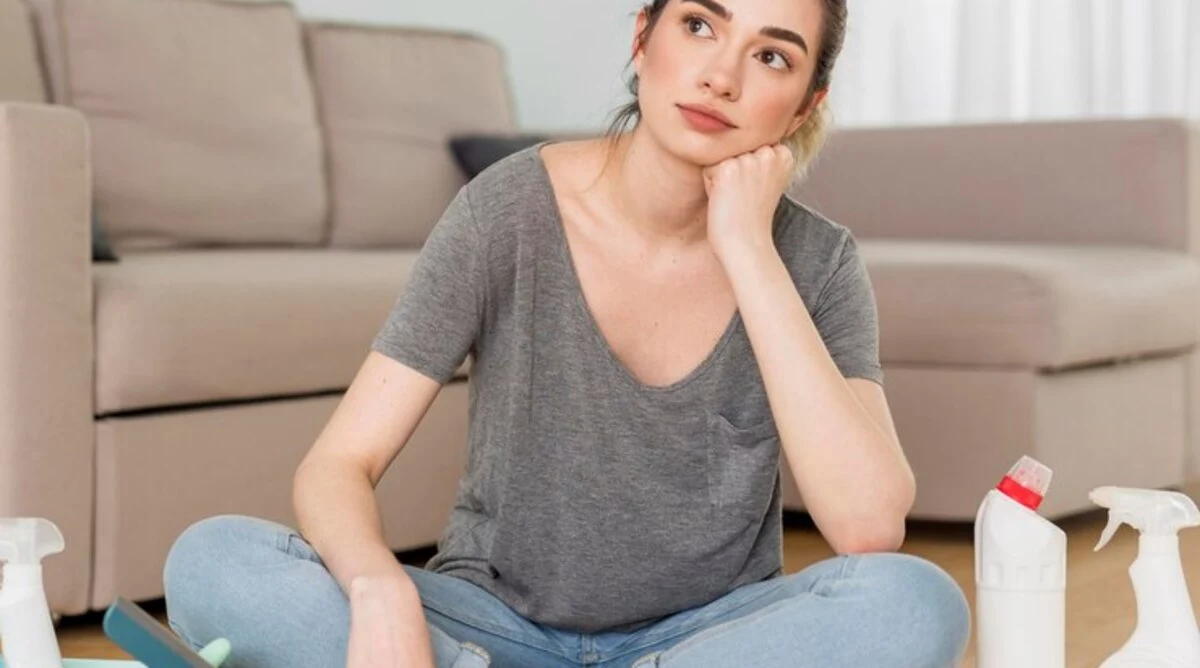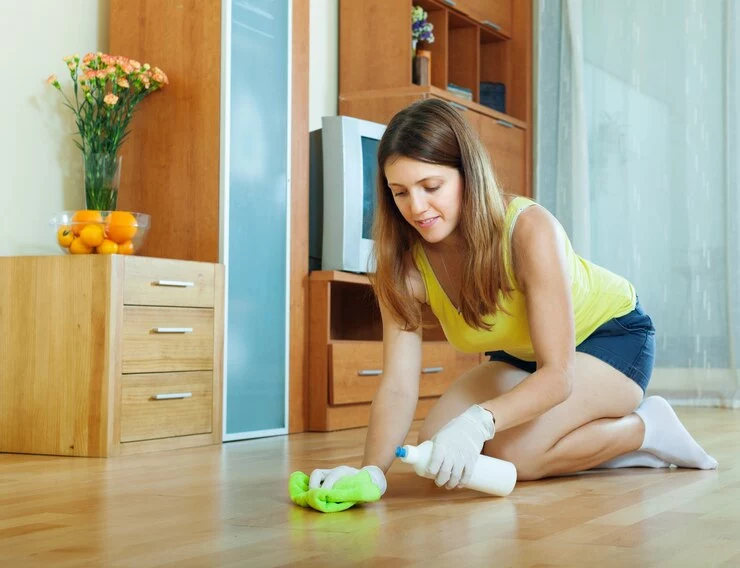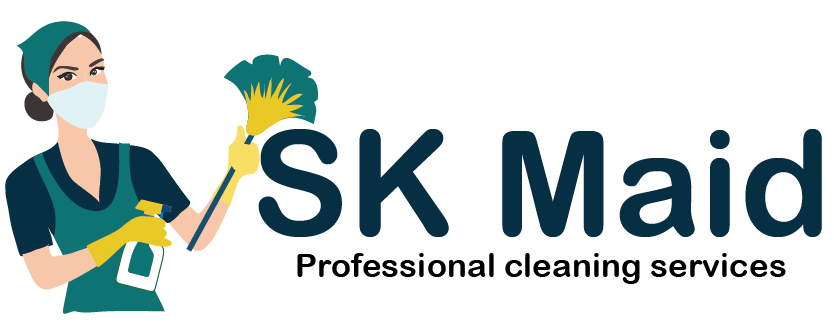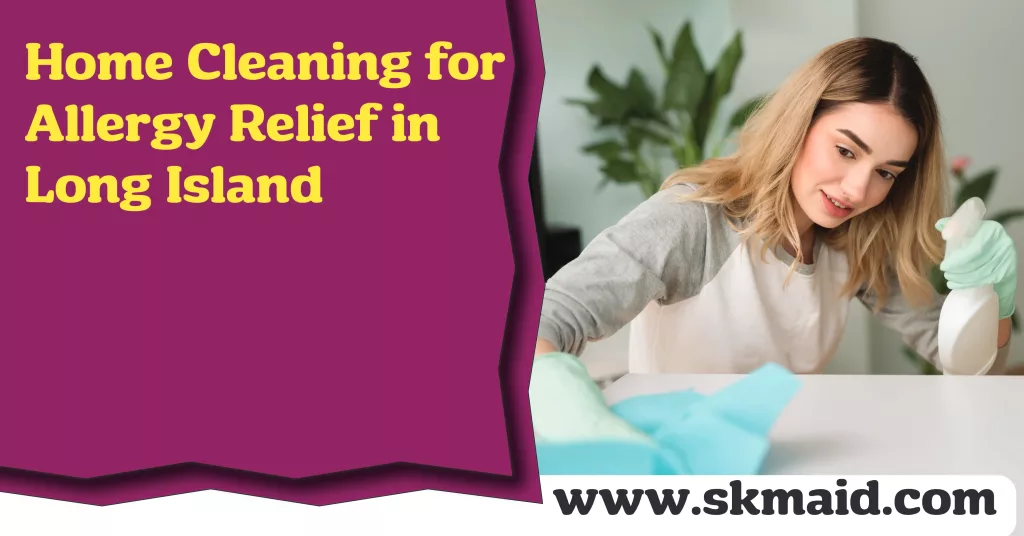Welcome, dear readers, to this comprehensive guide on achieving allergy relief through meticulous home cleaning in the scenic Long Island. In this article, we’ll delve into the importance of creating an allergy-free haven within your home, combating the pervasive allergens that plague our daily lives. Let’s embark on this journey toward a healthier, allergen-resistant dwelling.
Long Island, situated amidst nature’s bounty, possesses an inherent allure for its residents. However, this beauty comes at a cost: allergies. Before we proceed, let’s take a moment to understand the gravity of this issue. According to recent statistics, allergies affect a substantial portion of Long Island’s populace, casting a shadow over their daily lives. Now, let’s unravel the intricacies of allergies and discover ways to conquer them.
Understanding Allergies
What Are Allergies?
Allergies, in their essence, are the body’s way of overreacting to substances that are typically harmless. This hypersensitive response often manifests as a range of distressing symptoms, including sneezing, itchy eyes, and skin rashes. Imagine your immune system mistakenly identifying a benign pollen grain as a hostile invader – that’s an allergy in action.
Common allergens lurking in the Long Island air include:
- The notorious pollen.
- Microscopic dust mites.
- The ever-present pet dander.
- The insidious mold spores that thrive in our humid climate.
These malevolent particles can turn our homes into veritable battlegrounds if left unchecked.

Allergies in Long Island
In the context of Long Island, it’s crucial to recognize the specific allergens that dominate our environment. Pollen, driven by the diverse flora of the region, becomes a relentless adversary for allergy sufferers. Dust mites, well-suited to Long Island’s climate, thrive in the cozy nooks and crannies of our homes. Pet dander, a silent assailant, often elicits allergic reactions from our beloved furry companions. Mold, with its affinity for moisture, is another pervasive antagonist, capable of infiltrating our homes with ease.
These allergens, collectively, wage a relentless war on residents’ health and well-being, resulting in discomfort and, in severe cases, exacerbating respiratory conditions. It’s imperative to confront this issue head-on, starting with our homes.
Creating an Allergy-Friendly Home
Identifying Allergen Sources
To regain control over our living spaces, we must first identify the sources of these
allergens. Knowledge is power in this battle, and recognizing where these invisible foes hide is the first step toward relief. Dust collects on surfaces, pollen infiltrates through open windows, pet dander clings to upholstery, and mold lurks in damp corners. Armed with this understanding, we can now proceed to cleanse our homes.
Room-by-Room Allergy Assessment
Living Room
In the heart of our homes, the living room, allergens find ample hiding spots. Regular vacuuming with a HEPA filter-equipped vacuum cleaner and diligent dusting are your primary weapons. Consider investing in allergen-proof covers for your furniture to create a sanctuary free from allergenic particles.
Bedroom
In the bedroom, where we spend a significant portion of our lives, crafting an allergy-free sleeping environment is paramount. Mattresses and pillows encased in allergen-proof covers will act as an impenetrable barrier against dust mites. Opt for hypoallergenic bedding and wash it frequently in hot water to keep allergies at bay.
Kitchen
The kitchen, often overlooked in the allergy battle, demands equal attention. Keep food storage areas impeccably clean and tightly sealed. Regularly dispose of expired items to prevent mold growth. By maintaining a hygienic kitchen, you’ll not only ensure safe meals but also a healthier living environment.
Bathroom
In the bathroom, proper ventilation is the key to thwarting mold. Install exhaust fans to keep humidity levels in check. Regularly inspect and clean the grout in tiles, as mold tends to thrive in the damp crevices. A well-ventilated bathroom is a formidable deterrent against mold-induced allergies.
Allergen-Proofing Your Home
Flooring Choices
When considering flooring options, remember that some materials are more allergy-friendly than others. Hardwood, tile, and linoleum flooring are excellent choices as they are easy to clean and don’t trap allergens like carpets do. Consider making this change, especially in high-allergen areas of your home.
Air Purifiers
To further reduce indoor allergens, consider employing air purifiers. These devices can effectively filter out allergenic particles, providing much-needed relief. Choose the right type of air purifier for each room size and ensure proper maintenance for optimal performance.
HEPA Filters
High-efficiency particulate Air (HEPA) filters are your allies in the fight against allergens. These filters excel at trapping even the tiniest particles, ensuring the air you breathe is clean and allergen-free. Remember to replace HEPA filters regularly to maintain their effectiveness.
Cleaning Techniques
Dusting and Vacuuming
Dusting Tips
Dusting, often underestimated, is a vital cornerstone of effective cleaning, particularly for allergy sufferers. To banish those microscopic irritants from your living spaces, here’s a detailed guide to mastering dusting techniques:
- Microfiber Magic: When it comes to dusting, ditch the old cotton rags and embrace microfiber cloths. These electrostatic wonders attract and trap dust particles like a magnet, preventing them from becoming airborne. Their fine fibers can reach even the most challenging nooks and crannies.
- Top to Bottom: Always start dusting from the highest surfaces and work your way down. This prevents dust resettling on freshly cleaned areas.
- Mind the Details: Pay special attention to often-neglected areas like ceiling fans, light fixtures, and picture frames. Use a soft brush attachment on your vacuum cleaner to tackle these spots effectively.
- The Power of Dry Dusting: Consider dry dusting as opposed to using traditional furniture sprays, which can sometimes exacerbate allergies. A microfiber cloth slightly dampened with water can work wonders without introducing unnecessary chemicals.
Vacuuming Strategies
Your trusty vacuum cleaner can be your ally in the fight against allergens, provided you use it wisely.
- HEPA Filters: Opt for a vacuum cleaner equipped with a High-Efficiency Particulate Air (HEPA) filter. These filters capture minuscule particles, preventing them from escaping back into the air. HEPA filters are your shield against airborne allergens.
- Vacuum Frequency: How often you vacuum matters. For allergy relief, vacuum high-traffic areas at least once or twice a week. In less frequented spaces, a bi-weekly vacuuming regimen should suffice.
- Methodical Approach: Slow and steady wins the race when vacuuming. Move the vacuum slowly to ensure it has ample time to pick up dust, pet dander, and allergens embedded in carpets and rugs.
Mopping and Floor Care
Proper Mopping
Mopping isn’t just about making your floors shine; it’s about eradicating allergens effectively.
- The Right Tools: Invest in a quality microfiber mop or a steam mop. Both are excellent choices for trapping allergens and preventing them from becoming airborne.
- Allergen-Neutralizing Solutions: Use cleaning solutions specifically designed to neutralize allergens. These formulas break down and eliminate allergenic particles while leaving your floors spotless.
- Technique Matters: Don’t just slosh water around. Start at one end of the room and mop your way toward the exit, ensuring you cover every inch of the floor. Change mop heads regularly to maintain effectiveness.
Carpet Care
Carpets, though cozy, can be a haven for allergens if not properly cared for.
- Regular Vacuuming: Vacuum your carpets and rugs with a HEPA-equipped vacuum cleaner at least twice a week. Focus on high-traffic areas, and don’t forget beneath furniture.
- Professional Cleaning: Consider professional carpet cleaning annually. This deep-cleans your carpets, extracting embedded allergens and restoring their freshness.
Mold Prevention
Identifying Mold
Mold is a persistent foe, but early detection is key to effective control.
- Musty Odors: If you detect a musty or earthy smell, investigate further. Mold often emits distinctive odors that can help pinpoint its location.
- Visual Clues: Look for visible signs of mold growth, such as black, green, or white patches on walls, ceilings, or in damp corners of your home.
Mold Removal
When you spot mold, swift and safe removal is imperative.
- Protective Gear: Before attempting removal, don proper protective gear, including gloves, goggles, and a mask. Mold spores can be harmful when inhaled.
- Safe Cleaning Agents: Use mold-specific cleaning solutions or a mixture of water and mild detergent. Scrub the affected area gently to avoid spreading spores.
- Address Moisture: To prevent mold from returning, address the source of moisture, whether it’s a leaky pipe, a poorly ventilated area, or excessive humidity.
Allergen-Proofing Your Bed
Bedding Choices
Your bed is a sanctuary, and choosing the right bedding can make a world of difference for allergy relief.
- Hypoallergenic Bedding: Opt for hypoallergenic pillows and mattress covers to create a protective barrier against dust mites and other allergens.
- Washable Bedspreads: Use washable bedspreads and pillow protectors. Regular washing in hot water (above 130°F or 54°C) kills dust mites and removes allergens.
Regular Bed Maintenance
Maintaining an allergen-free bed is an ongoing process.
- Weekly Washing: Sheets, pillowcases, and mattress covers should be laundered weekly in hot water to ensure allergen-free bedding.
- Frequent Vacuuming: Vacuum your mattress and pillows with a HEPA-equipped vacuum cleaner every few months to eliminate dust mites and debris.
Allergy-Friendly Cleaning Products
DIY Cleaning Solutions
You can create effective allergy-friendly cleaning solutions right in your kitchen.
- Vinegar and Water: A mixture of white vinegar and water is an excellent all-purpose cleaner that also helps to neutralize allergens.
- Baking Soda: Baking soda is a gentle abrasive cleaner that can remove allergens from various surfaces.
- Essential Oils: Essential oils like tea tree oil and eucalyptus oil can be added to homemade cleaning solutions for their natural antibacterial and antifungal properties.
Store-Bought Allergy-Friendly Products
For those who prefer commercial solutions, there are plenty of allergy-friendly products on the market.
- Certified Products: Look for cleaning products labeled as allergy-friendly or hypoallergenic. Reputable brands often offer a range of options for different cleaning needs.
- Read Labels: Always read product labels to ensure they meet your specific allergy requirements.
Outdoor Allergen Management
Landscaping Tips
The battle against allergens extends beyond your doorstep into your outdoor spaces.
- Low-Pollen Plants: Choose low-pollen plants for your garden to minimize allergens. Native plants are often a good choice as they are adapted to the local environment.
- Regular Yard Maintenance: Keep your garden well-trimmed and maintained. Regular pruning and weeding can help reduce allergen-producing plants.
Pollen Avoidance
To avoid pollen exposure, strategic actions are necessary.
- Closed Windows: During high pollen seasons, keep windows closed to prevent pollen from entering your home. Use air conditioning with a clean filter for ventilation.
- Outdoor Attire: Change your clothes and shower after spending time outdoors during high pollen periods to remove pollen particles from your body.
By implementing these cleaning techniques and strategies, you can create an allergy-friendly environment both inside and outside your home, allowing you to breathe easier and enjoy a healthier, more comfortable life.
Allergy Relief and Health Benefits
In the serene landscapes of Long Island, where natural beauty abounds, achieving an allergy-free home isn’t merely a matter of comfort; it’s a journey toward an improved quality of life.
Allergy Relief and Health Benefits
Improved Quality of Life
The allure of Long Island’s lush surroundings draws us closer to nature, yet for those susceptible to allergies, this enchantment can come at a price. Picture a life free from the persistent irritation of sneezing fits, itchy eyes, and congestion. Such is the promise of an allergy-free home. The impact on overall well-being cannot be overstated.
Imagine waking up in the morning with clear sinuses, breathing in the crisp Long Island air without the fear of an allergic reaction. Picture the joy of spending time outdoors, taking in the natural beauty of the island, knowing that when you return home, you’ll find solace in an environment devoid of allergenic intruders.
But it’s not just about envisioning this better life; it’s about experiencing it. Many Long Island residents have shared their personal stories and testimonials, attesting to the transformative power of a clean, allergen-free home. From parents enjoying quality time with their children without the constant interruption of sneezes to individuals rediscovering their love for gardening, the stories are as diverse as the island’s landscapes. The common thread? A life unhindered by allergies and a newfound appreciation for the beauty of Long Island.
Reduced Allergy Symptoms
The path to allergy relief in Long Island begins with effective home cleaning. It’s a journey marked by a noticeable reduction in allergy symptoms, offering respite from the relentless assault of sneezing, itching, and congestion.
Consider this: a well-executed cleaning regimen can significantly reduce the allergen load within your home. Pollen particles that, once settled on surfaces, are banished, dust mites no longer find refuge in your upholstery, pet dander is kept at bay, and mold spores are evicted from their damp hideaways. The result? Fewer allergens circulate in your living spaces, leading to a substantial reduction in allergy symptoms.
Imagine breathing freely, with each inhalation invigorating rather than incapacitating. The constant itch in your eyes and throat becomes a distant memory. This transformation is not an elusive dream but a tangible reality attainable through diligence in home cleaning.
A Long Island spring, once dreaded for its pollen-laden air, becomes an opportunity to revel in the island’s natural beauty. It’s a time when outdoor adventures no longer come with the baggage of allergic reactions. By adopting effective cleaning techniques and strategies, you pave the way for a life less encumbered by allergies, unlocking the full potential of your Long Island experience.

FAQs (Frequently Asked Questions)
Q1: How often should I clean my home to reduce allergens?
A1: Cleaning frequency depends on several factors, but generally, a thorough cleaning once a week is recommended for allergy relief.
Q2: Are there natural remedies for allergy relief besides cleaning?
A2: Yes, natural remedies like saline nasal rinses and herbal teas can complement home cleaning efforts in reducing allergies.
Q3: Can I hire professional cleaners for allergy-proofing my home?
A3: Absolutely, professional cleaning services specializing in allergen removal can be a great option for a deep, thorough clean.
Q4: What are the most common allergens in Long Island?
A4: Common allergens in Long Island include pollen, dust mites, pet dander, and mold spores.
Q5: Are there any specific tips for pet owners dealing with allergies?
A5: Yes, there are specific strategies for pet owners, including regular pet grooming, washing pet bedding, and using HEPA air purifiers.
Q6: Can allergies be completely cured by home cleaning?
A6: While home cleaning can significantly reduce allergy symptoms, it may not provide a complete cure, especially for individuals with severe allergies. Consult with an allergist for personalized advice.
Q7: What are the benefits of using HEPA filters in my home?
A7: HEPA filters are highly effective at trapping airborne allergens, improving indoor air quality, and reducing allergy symptoms for those with sensitivities.
Q8: Is it necessary to replace bedding if I have allergies?
A8: It’s not always necessary, but using hypoallergenic bedding and washing bedding regularly can greatly help reduce allergen exposure.
Q9: How can I identify mold in my home, and is it dangerous?
A9: Mold can be identified by its musty odor, discoloration, and visible growth. While not always dangerous, some molds can produce harmful mycotoxins. Prompt removal is recommended.
Conclusion
In the realm of Long Island’s scenic wonders, the journey to an allergy-free home is a transformative one. It’s a voyage that offers an improved quality of life, unburdened by the shackles of allergies. By diligently implementing the tips and techniques discussed in this guide, you can reclaim your living spaces and embrace the beauty of Long Island without reservation.
So, let’s summarize the key takeaways: Effective home cleaning is the linchpin of allergy relief, reducing allergens and their accompanying symptoms. It’s a journey marked by improved well-being and a newfound sense of freedom.
We encourage you to embark on this journey toward a healthier, allergy-resistant home. Let the allure of Long Island’s natural beauty be your inspiration, and let your home be your sanctuary.

